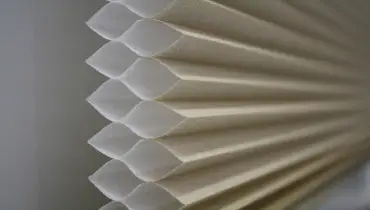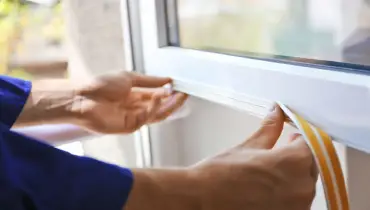
It’s that time of year again! The cold is slowly beginning to creep its way into your home. In an effort to keep from boring you with math and science lets just say heat flows from hot to cold. So technically the heat is trying to escape. We often feel a drafty window and say to ourselves “ The cold is trying to break in.”, but it’s not necessarily true. So how do we convince the heat from leaving?
The Easy
Cellular Shades

Cellular or sometimes called honeycomb shades use a unique design to help keep your home cozy. They feature air pockets to add a layer of insulation to the window. The shades are thin enough to let light through so you can enjoy fewer drafts without sitting in total darkness. Another bonus for cellular shades is they offer privacy at the window. Unless you select a sheer fabric, which is also an option, honeycomb shades are completely private. If you choose the versatile top-down/bottom-up feature, which allows the shade to either be lifted up to the top of the window or lowered to the windowsill, you can still get light streaming into the room above the shade while enjoying complete privacy at the lower portion of the window.
Black-Out Curtains
Sometimes, darkness is exactly what you’re going for, especially in your bedroom. Heavy curtains don’t just block out the light; they also stop drafts from passing through the window. Pull heavy curtains over the windows at night to effectively cover them with a blanket and keep drafts out. The black color will also help absorb the sun’s rays and help trap heat.
The Moderate
Temporary Film
Any store where you can buy basic home improvement goods you’ll be able to find DIY shrink film. This clear plastic sheeting shrinks drum-tight when heated with a hair dryer and uses double-sided tape to help hold firm. The film seals off drafts and captures an insulating buffer of air. Use rubbing alcohol to help release the tape in the spring to avoid pulling off the paint from your window pane.Weather Striping and Rope Caulk

Self-sticking weatherstripping is a useful tool for helping windows close more tightly. Applying weather stripping is easy. First, remove any existing weather stripping and scrape away residue. Measure twice and cut once to ensure the proper length. Peel the backing off the sticky side of the weather stripping and press it firmly against the window frame. Like weather stripping, rope caulk can film gaps in the molding. This soft, sticky stuff can be molded to suit the gap and removes easily at the end of the season.
The Hard
Window Replacement
Some windows just can’t be saved. Even though you’ve put your best foot forward and tried everything the heat just won’t stay. A worn, rotted, or chronically rattling window is simply past its useful life. Replacing old windows is a job for a pro. You’ll be able to take your pick of low-maintenance frame materials, as well as low-E and insulated glass options. But it’s not a task every homeowner should be willing to tackle.
